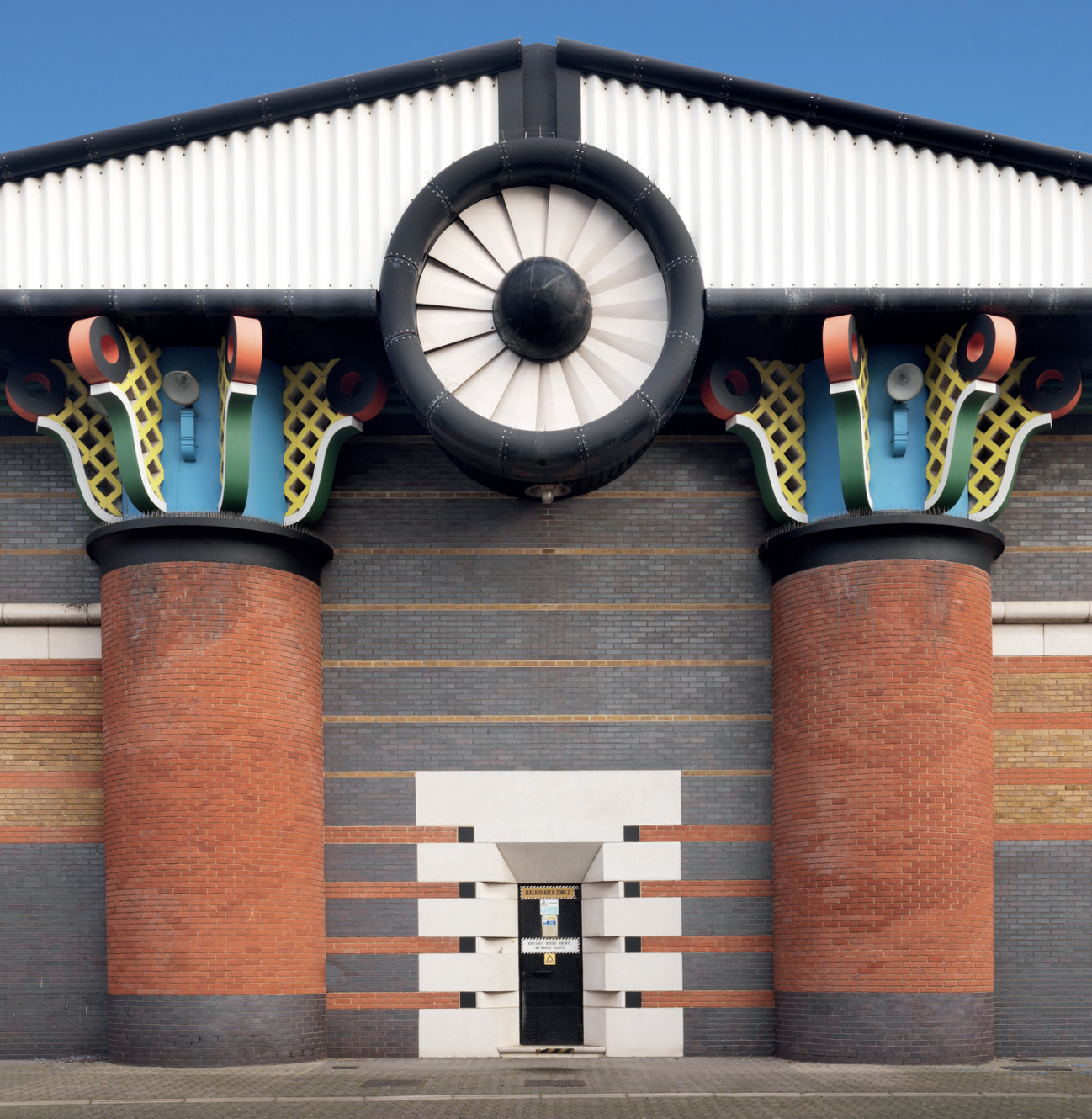Post
BOOK REVIEW | John Outram
13 Mar 2023
Reviewed by Rob Fiehn, Society Trustee
John Outram by Geraint Franklin, published by the Twentieth Century Society
I’ve long been obsessed with the Isle of Dogs Pumping Station, designed by the architect John Outram. I think it’s fair to ask: why is there a temple in East London for a building dedicated to infrastructure? Surprisingly, the Richard Rogers Partnership – known for their High-Tech aesthetic – didn’t design many industrial works but they did also create a pumping station, not far from Outram’s. This made sense to me, and Rogers’ example is a cylindrical riot of colour and pipes. Why then had this other designer been commissioned to create a structure based on Classical motifs, which seems like such a world away from modern technology? Luckily the historian Geraint Franklin has taken on the task of compiling John Outram’s life and works in this handy guide from the Twentieth Century Society. For the purposes of this review, I am interested to look at the life of the architect and his impact on the London scene.
Franklin starts his book with an overview of Outram’s early life. Born in Malaysia, he is a product of empire and perhaps this global perspective could have inspired his desire to understand the buildings that shaped the ancient world. During his architectural studies, he came into contact with some of the great figures of the twentieth century, including Peter Smithson, Peter Cook and James Stirling. After a stint at the London County Council (LCC), he set up on his own in 1974 and it took some time before we started to see the Outram buildings that are more widely recognized today. He built temples for modern industry, and I was particularly taken with the Harp Heating building with its flaming capitals that serves as a visual pun for gas burners. Many of these ideas would be carried over for the Isle of Dogs Pumping Station, designed to replicate the civic architecture of ancient civilizations which had themselves stood the test of time. I love this fusion of history and technology, most notably in the turbine-powered pediment of the station. It is strange to think that this Postmodern icon is locked away behind gates, so that it can only be glimpsed from the pavement.
I was enthralled by the series of unrealized projects, designed for the City of London, and it’s hard not to lament the loss of these never-to-be-built characterful buildings for the corporate centre of the capital. The works are so ambitious in scale and decorative elements, they would have enlivened streets and spaces that are sometimes homogenous and lacking in a true sense of identity. Franklin beautifully encapsulates Outram’s poetic views on urbanism when he states: “For every city, he maintained, there was an anti-city, its counterpart in the realm of the imagination, memory and dreams.”
I have barely scratched the surface of this lovely compendium of the life and projects of an architect that has not received the recognition he deserves. It is a joyful journey through houses, warehouses and schools that demonstrate a love of architecture old and new.
